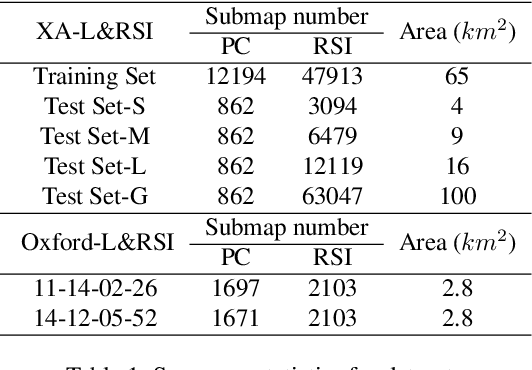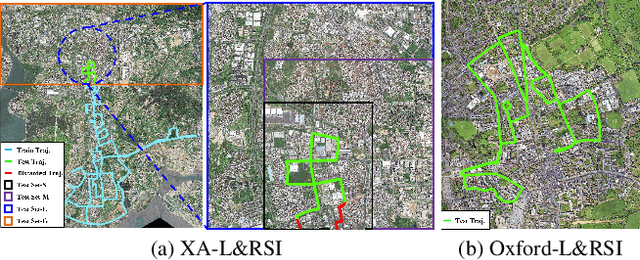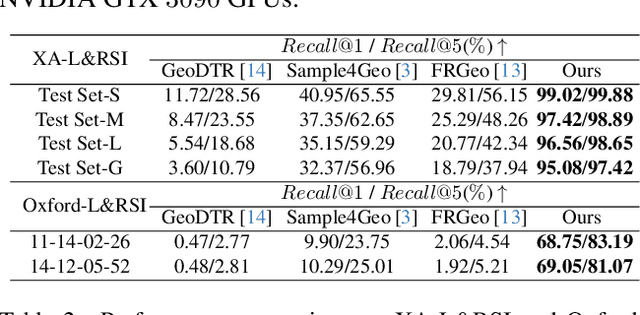Siqi Shen
Xiamen University, China
Revisiting LLM Value Probing Strategies: Are They Robust and Expressive?
Jul 17, 2025Abstract:There has been extensive research on assessing the value orientation of Large Language Models (LLMs) as it can shape user experiences across demographic groups. However, several challenges remain. First, while the Multiple Choice Question (MCQ) setting has been shown to be vulnerable to perturbations, there is no systematic comparison of probing methods for value probing. Second, it is unclear to what extent the probed values capture in-context information and reflect models' preferences for real-world actions. In this paper, we evaluate the robustness and expressiveness of value representations across three widely used probing strategies. We use variations in prompts and options, showing that all methods exhibit large variances under input perturbations. We also introduce two tasks studying whether the values are responsive to demographic context, and how well they align with the models' behaviors in value-related scenarios. We show that the demographic context has little effect on the free-text generation, and the models' values only weakly correlate with their preference for value-based actions. Our work highlights the need for a more careful examination of LLM value probing and awareness of its limitations.
ClimbingCap: Multi-Modal Dataset and Method for Rock Climbing in World Coordinate
Mar 27, 2025Abstract:Human Motion Recovery (HMR) research mainly focuses on ground-based motions such as running. The study on capturing climbing motion, an off-ground motion, is sparse. This is partly due to the limited availability of climbing motion datasets, especially large-scale and challenging 3D labeled datasets. To address the insufficiency of climbing motion datasets, we collect AscendMotion, a large-scale well-annotated, and challenging climbing motion dataset. It consists of 412k RGB, LiDAR frames, and IMU measurements, including the challenging climbing motions of 22 skilled climbing coaches across 12 different rock walls. Capturing the climbing motions is challenging as it requires precise recovery of not only the complex pose but also the global position of climbers. Although multiple global HMR methods have been proposed, they cannot faithfully capture climbing motions. To address the limitations of HMR methods for climbing, we propose ClimbingCap, a motion recovery method that reconstructs continuous 3D human climbing motion in a global coordinate system. One key insight is to use the RGB and LiDAR modalities to separately reconstruct motions in camera coordinates and global coordinates and to optimize them jointly. We demonstrate the quality of the AscendMotion dataset and present promising results from ClimbingCap. The AscendMotion dataset and source code release publicly at \href{this link}{http://www.lidarhumanmotion.net/climbingcap/}
L2RSI: Cross-view LiDAR-based Place Recognition for Large-scale Urban Scenes via Remote Sensing Imagery
Mar 14, 2025


Abstract:We tackle the challenge of LiDAR-based place recognition, which traditionally depends on costly and time-consuming prior 3D maps. To overcome this, we first construct XA-L&RSI dataset, which encompasses approximately $110,000$ remote sensing submaps and $13,000$ LiDAR point cloud submaps captured in urban scenes, and propose a novel method, L2RSI, for cross-view LiDAR place recognition using high-resolution Remote Sensing Imagery. This approach enables large-scale localization capabilities at a reduced cost by leveraging readily available overhead images as map proxies. L2RSI addresses the dual challenges of cross-view and cross-modal place recognition by learning feature alignment between point cloud submaps and remote sensing submaps in the semantic domain. Additionally, we introduce a novel probability propagation method based on a dynamic Gaussian mixture model to refine position predictions, effectively leveraging temporal and spatial information. This approach enables large-scale retrieval and cross-scene generalization without fine-tuning. Extensive experiments on XA-L&RSI demonstrate that, within a $100km^2$ retrieval range, L2RSI accurately localizes $95.08\%$ of point cloud submaps within a $30m$ radius for top-$1$ retrieved location. We provide a video to more vividly display the place recognition results of L2RSI at https://shizw695.github.io/L2RSI/.
ConDo: Continual Domain Expansion for Absolute Pose Regression
Dec 18, 2024



Abstract:Visual localization is a fundamental machine learning problem. Absolute Pose Regression (APR) trains a scene-dependent model to efficiently map an input image to the camera pose in a pre-defined scene. However, many applications have continually changing environments, where inference data at novel poses or scene conditions (weather, geometry) appear after deployment. Training APR on a fixed dataset leads to overfitting, making it fail catastrophically on challenging novel data. This work proposes Continual Domain Expansion (ConDo), which continually collects unlabeled inference data to update the deployed APR. Instead of applying standard unsupervised domain adaptation methods which are ineffective for APR, ConDo effectively learns from unlabeled data by distilling knowledge from scene-agnostic localization methods. By sampling data uniformly from historical and newly collected data, ConDo can effectively expand the generalization domain of APR. Large-scale benchmarks with various scene types are constructed to evaluate models under practical (long-term) data changes. ConDo consistently and significantly outperforms baselines across architectures, scene types, and data changes. On challenging scenes (Fig.1), it reduces the localization error by >7x (14.8m vs 1.7m). Analysis shows the robustness of ConDo against compute budgets, replay buffer sizes and teacher prediction noise. Comparing to model re-training, ConDo achieves similar performance up to 25x faster.
A New Adversarial Perspective for LiDAR-based 3D Object Detection
Dec 17, 2024



Abstract:Autonomous vehicles (AVs) rely on LiDAR sensors for environmental perception and decision-making in driving scenarios. However, ensuring the safety and reliability of AVs in complex environments remains a pressing challenge. To address this issue, we introduce a real-world dataset (ROLiD) comprising LiDAR-scanned point clouds of two random objects: water mist and smoke. In this paper, we introduce a novel adversarial perspective by proposing an attack framework that utilizes water mist and smoke to simulate environmental interference. Specifically, we propose a point cloud sequence generation method using a motion and content decomposition generative adversarial network named PCS-GAN to simulate the distribution of random objects. Furthermore, leveraging the simulated LiDAR scanning characteristics implemented with Range Image, we examine the effects of introducing random object perturbations at various positions on the target vehicle. Extensive experiments demonstrate that adversarial perturbations based on random objects effectively deceive vehicle detection and reduce the recognition rate of 3D object detection models.
Mining and Transferring Feature-Geometry Coherence for Unsupervised Point Cloud Registration
Nov 04, 2024



Abstract:Point cloud registration, a fundamental task in 3D vision, has achieved remarkable success with learning-based methods in outdoor environments. Unsupervised outdoor point cloud registration methods have recently emerged to circumvent the need for costly pose annotations. However, they fail to establish reliable optimization objectives for unsupervised training, either relying on overly strong geometric assumptions, or suffering from poor-quality pseudo-labels due to inadequate integration of low-level geometric and high-level contextual information. We have observed that in the feature space, latent new inlier correspondences tend to cluster around respective positive anchors that summarize features of existing inliers. Motivated by this observation, we propose a novel unsupervised registration method termed INTEGER to incorporate high-level contextual information for reliable pseudo-label mining. Specifically, we propose the Feature-Geometry Coherence Mining module to dynamically adapt the teacher for each mini-batch of data during training and discover reliable pseudo-labels by considering both high-level feature representations and low-level geometric cues. Furthermore, we propose Anchor-Based Contrastive Learning to facilitate contrastive learning with anchors for a robust feature space. Lastly, we introduce a Mixed-Density Student to learn density-invariant features, addressing challenges related to density variation and low overlap in the outdoor scenario. Extensive experiments on KITTI and nuScenes datasets demonstrate that our INTEGER achieves competitive performance in terms of accuracy and generalizability.
HiSC4D: Human-centered interaction and 4D Scene Capture in Large-scale Space Using Wearable IMUs and LiDAR
Sep 09, 2024



Abstract:We introduce HiSC4D, a novel Human-centered interaction and 4D Scene Capture method, aimed at accurately and efficiently creating a dynamic digital world, containing large-scale indoor-outdoor scenes, diverse human motions, rich human-human interactions, and human-environment interactions. By utilizing body-mounted IMUs and a head-mounted LiDAR, HiSC4D can capture egocentric human motions in unconstrained space without the need for external devices and pre-built maps. This affords great flexibility and accessibility for human-centered interaction and 4D scene capturing in various environments. Taking into account that IMUs can capture human spatially unrestricted poses but are prone to drifting for long-period using, and while LiDAR is stable for global localization but rough for local positions and orientations, HiSC4D employs a joint optimization method, harmonizing all sensors and utilizing environment cues, yielding promising results for long-term capture in large scenes. To promote research of egocentric human interaction in large scenes and facilitate downstream tasks, we also present a dataset, containing 8 sequences in 4 large scenes (200 to 5,000 $m^2$), providing 36k frames of accurate 4D human motions with SMPL annotations and dynamic scenes, 31k frames of cropped human point clouds, and scene mesh of the environment. A variety of scenarios, such as the basketball gym and commercial street, alongside challenging human motions, such as daily greeting, one-on-one basketball playing, and tour guiding, demonstrate the effectiveness and the generalization ability of HiSC4D. The dataset and code will be publicated on www.lidarhumanmotion.net/hisc4d available for research purposes.
Understanding the Capabilities and Limitations of Large Language Models for Cultural Commonsense
May 07, 2024



Abstract:Large language models (LLMs) have demonstrated substantial commonsense understanding through numerous benchmark evaluations. However, their understanding of cultural commonsense remains largely unexamined. In this paper, we conduct a comprehensive examination of the capabilities and limitations of several state-of-the-art LLMs in the context of cultural commonsense tasks. Using several general and cultural commonsense benchmarks, we find that (1) LLMs have a significant discrepancy in performance when tested on culture-specific commonsense knowledge for different cultures; (2) LLMs' general commonsense capability is affected by cultural context; and (3) The language used to query the LLMs can impact their performance on cultural-related tasks. Our study points to the inherent bias in the cultural understanding of LLMs and provides insights that can help develop culturally aware language models.
The Generation Gap:Exploring Age Bias in Large Language Models
Apr 12, 2024Abstract:In this paper, we explore the alignment of values in Large Language Models (LLMs) with specific age groups, leveraging data from the World Value Survey across thirteen categories. Through a diverse set of prompts tailored to ensure response robustness, we find a general inclination of LLM values towards younger demographics. Additionally, we explore the impact of incorporating age identity information in prompts and observe challenges in mitigating value discrepancies with different age cohorts. Our findings highlight the age bias in LLMs and provide insights for future work.
RELI11D: A Comprehensive Multimodal Human Motion Dataset and Method
Mar 28, 2024



Abstract:Comprehensive capturing of human motions requires both accurate captures of complex poses and precise localization of the human within scenes. Most of the HPE datasets and methods primarily rely on RGB, LiDAR, or IMU data. However, solely using these modalities or a combination of them may not be adequate for HPE, particularly for complex and fast movements. For holistic human motion understanding, we present RELI11D, a high-quality multimodal human motion dataset involves LiDAR, IMU system, RGB camera, and Event camera. It records the motions of 10 actors performing 5 sports in 7 scenes, including 3.32 hours of synchronized LiDAR point clouds, IMU measurement data, RGB videos and Event steams. Through extensive experiments, we demonstrate that the RELI11D presents considerable challenges and opportunities as it contains many rapid and complex motions that require precise location. To address the challenge of integrating different modalities, we propose LEIR, a multimodal baseline that effectively utilizes LiDAR Point Cloud, Event stream, and RGB through our cross-attention fusion strategy. We show that LEIR exhibits promising results for rapid motions and daily motions and that utilizing the characteristics of multiple modalities can indeed improve HPE performance. Both the dataset and source code will be released publicly to the research community, fostering collaboration and enabling further exploration in this field.
 Add to Chrome
Add to Chrome Add to Firefox
Add to Firefox Add to Edge
Add to Edge